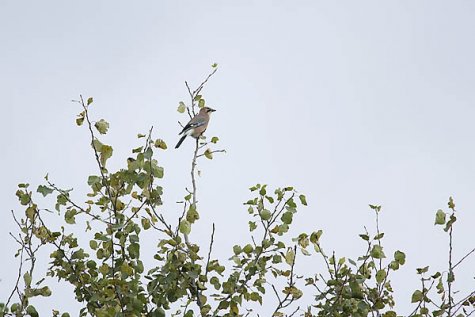How oaks and hazels spread
Photo: Arne Ader
Translation: Liis
Jay on aspen branch
| Jay |
Pasknäär
|
Garrulus glandarius |
The cautious bird – but it isn’t shy of humans – likes to keep to the verges of forests where there is much undergrowth and many hiding possibilities. As a rather poor flier it must be wary of raptors-enemies in open areas. Leaves on trees are fewer now, and so the jays become more visible, but actually the birds are very true to their area.
The jays started collecting their winter stores with hazelnuts in August and go on with hiding acorns until snow falls. During four months one bird is estimated to make up to ten thousand caches, or in other words, 4 to 5 caches each hour during daylight time – impressive numbers. On top of that the locations of the winter stores must be remembered, quite successfully as it seems. From forgotten hiding places with luck new trees grow up, so that the following generations of jays can go on with the same way of life.
The winter number of jays in Estonia varies between a hundred thousand and a quarter of a million birds. Smaller than a crow, in size rather as a jackdaw. On the folded wings Estonia’s national colours show; the body is pinkish-grey, the base of the tail white, the tail itself long and black but shorter than the magpie’s. When agitated the feathers on the top of the head rise. Interesting bird.









